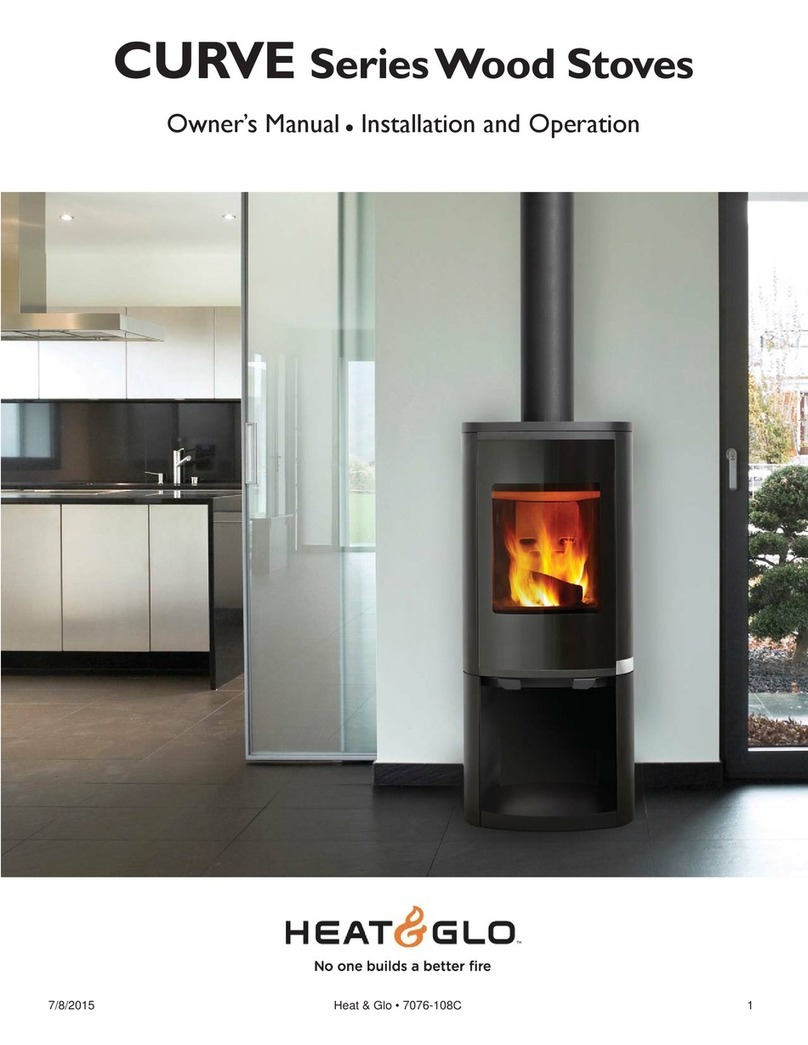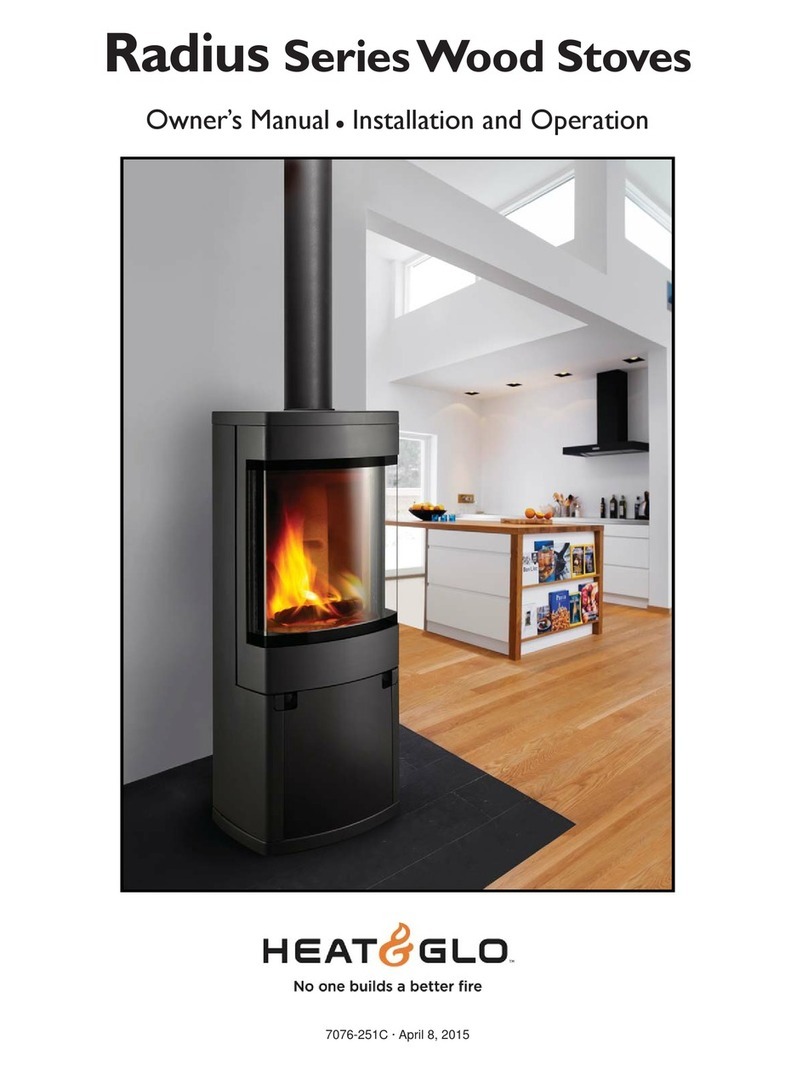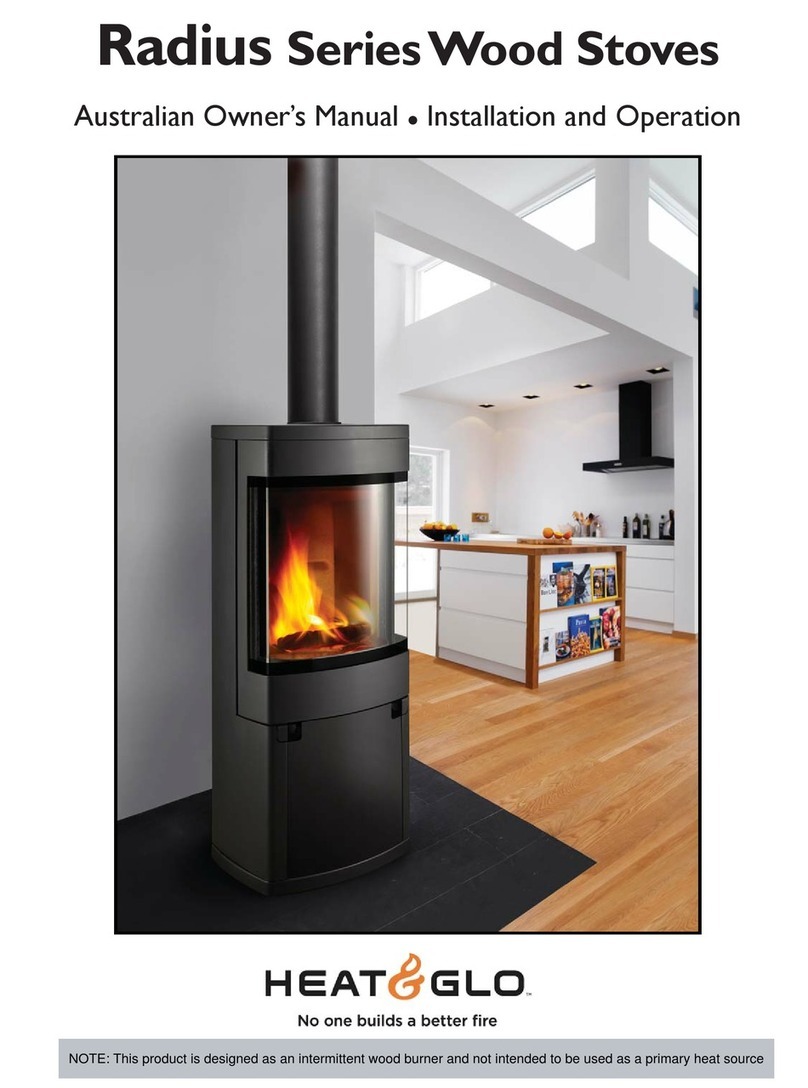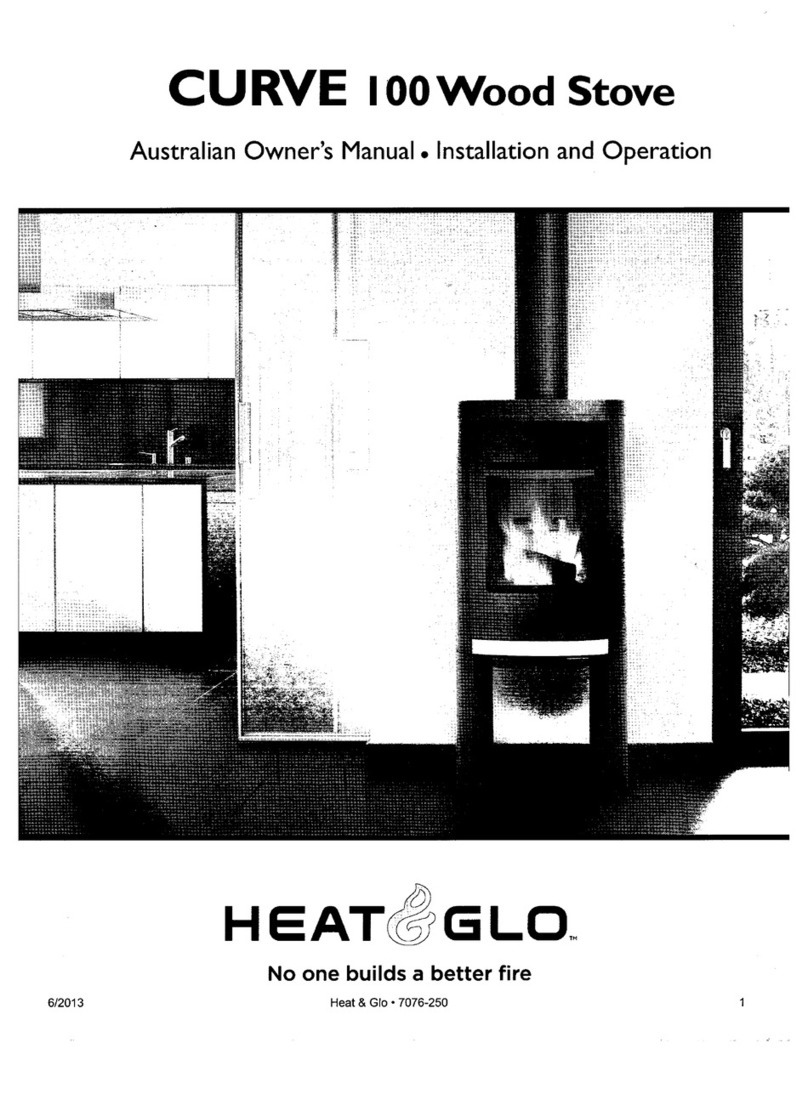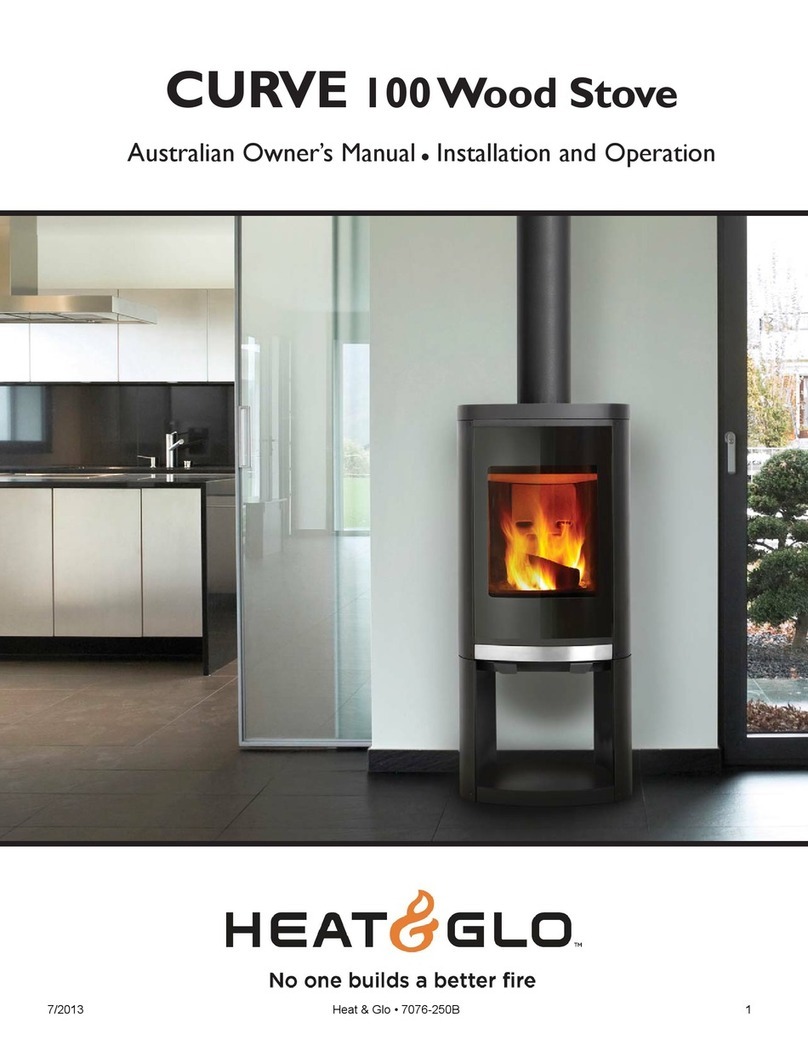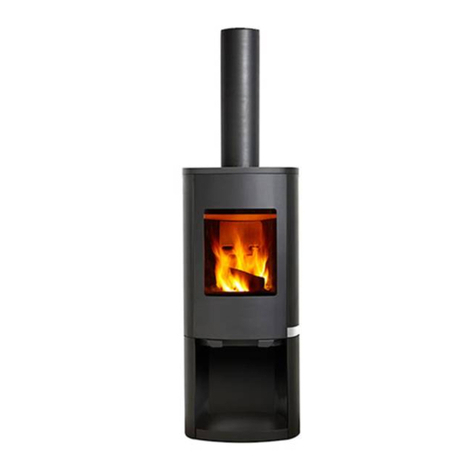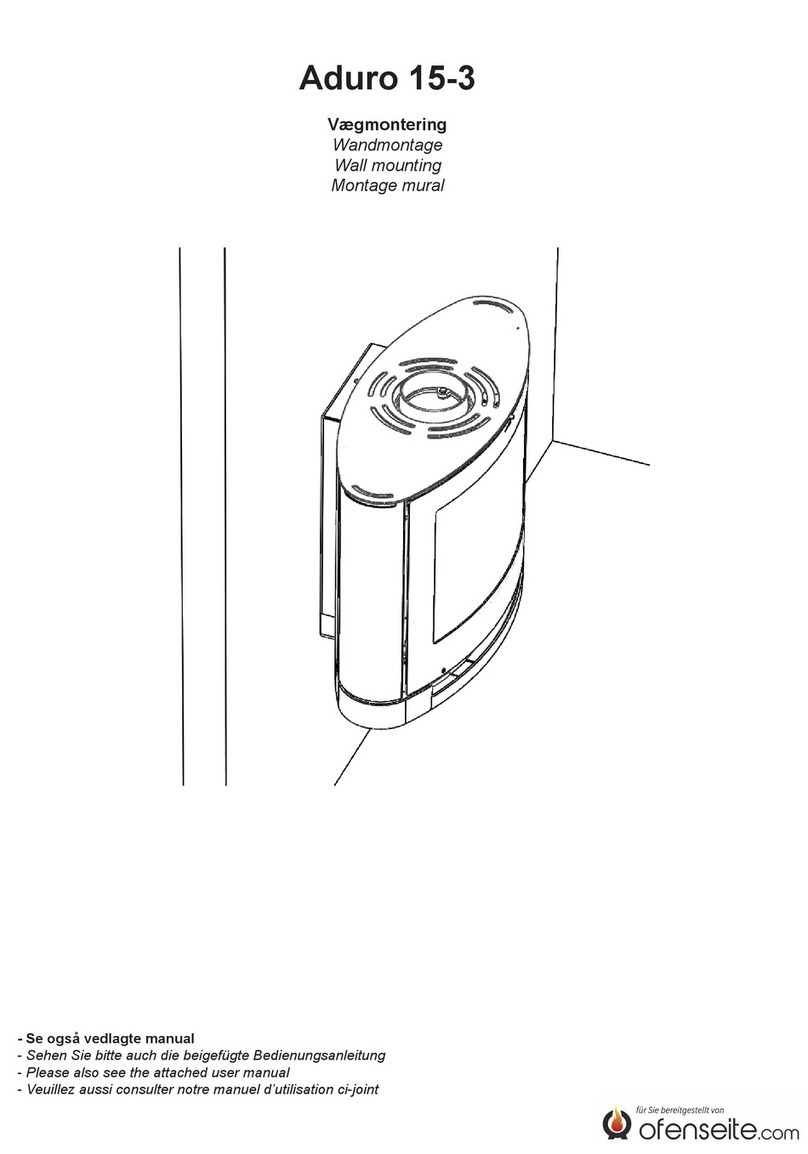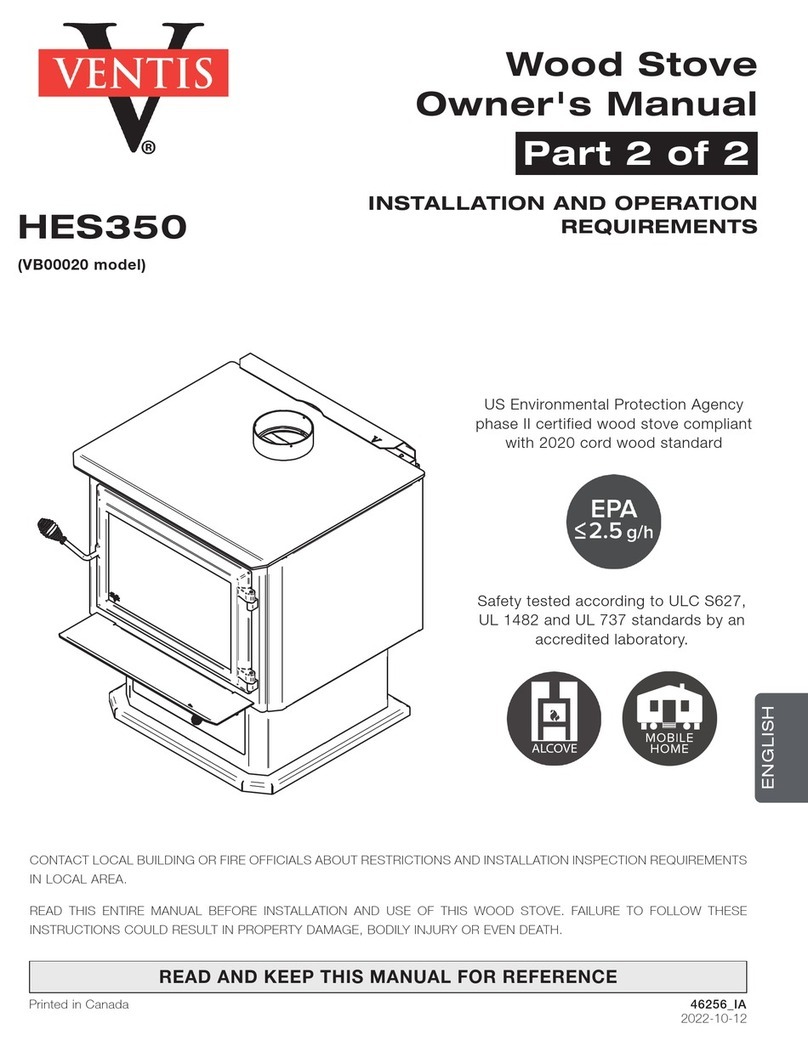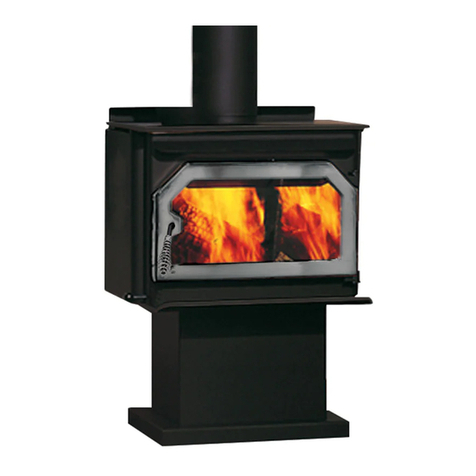
10 Heat & Glo • 7076-250C 7/11/2014
Curve 100
4 Operation
A. General Use
The Curve 100 Wood Stove is designed and tested for
intermittent use. This means that it is not designed for or
recommended to burn continuously for 24 hours.
This is a wood burning stove, the front, sides, and top will get hot.
Please use caution when you are near the fire especially when it is
burning.
Disposal of ashes and coals should always be in a non-com-
bustible container. Never put coals or embers into a flammable
container, even when they do not appear to be hot. Coals can
hold heat for extended periods of time and may cause damage if
improperly disposed of.
Prior to the start of the burn season or following extended peri-
ods of non-use, you should inspect the firebox, flue connections,
and chimney system for debris and obstructions. Clean as neces-
sary. Contact your chimney sweep if needed.
Modification to your Curve appliance is prohibited, will void the
warranty, and may cause unsafe conditions during use. Certain
accessories are approved and available from your local Curve
Wood Stove Dealer.
Use only approved replacement parts available from your Curve
Wood Stove Dealer.
B. Lighting Instructions
Use paper or lighting briquettes and small pieces of wood to light
fire. Place the paper first in the bottom of the fire box and stack the
lighting briquettes or small pieces of wood on top of the paper. Do
not fill the firebox higher than the holes in the rear of the fire box.
(Fig. 11.1).
Light the paper and leave the door open slightly. As the small
pieces of wood are burning add slightly larger fuel on top of burning
and fuel. Pull both air controls out and close the door. After 15-30
minutes or when good fire is established, close the lower air control
(it is located on the left side) by pushing it in completely. When
loading more wood during use, this control may need to be pulled
out to add more air under the fire.
C. Your First Fire
During the first firing of the Curve it is to be expected to smoke and
give off unpleasant fumes. This is caused by the paint curing on the
coated surfaces. Make sure the room is well ventilated to reduce
the inhalation of these fumes. After this first fire the smoking and
unpleasant smell should greatly diminish.
As the paint cures, the rope seal on the door may stick to the face
making it difficult to open the front door. To aid in the curing process,
open the front door every 5 – 10 minutes for the first one to two hours.
This will keep the seal from forming a bond to the face as the coating
cures completely.
For the duration of this fire keep both air controls in the completely
open position to ensure hot burn to cure stove.
D. Fuels
The Curve 100 wood stove is designed to burn a wide
range of firewood species. In general hardwoods are better
for heating since they burn more evenly. When operating
the unit with different types of fuels, refer to operating the
wood stove section for more information. Consult the
internet for specific heating values of different species of
firewood.
The optimal size of firewood for the Curve 100 wood
stove is 25 cm long and 6 cm – 12 cm in diameter when
split. Some varieties of fuels may perform better when
split smaller. When establishing a fire, it is helpful to have
a variety of different diameters in order to heat the flue up
quickly and establish the draft.
Fuels should be stored in locations protected from rain
and excessive moisture. Well seasoned firewood may take
1 -2 years to dry out. Well ventilated areas protected from
environmental elements aid in preparing the fuel faster. If
the fuel is stored outside, it is recommended that it is stored
inside a few days before use to allow the fuel to warm up to
room temperature.
Firewood and combustible items should NEVER be
stored below the firebox. Make sure the proper clearance
to flammable materials is maintained for all fuel storage.
The firewood used should have a moisture level less
than 20%. The Curve 100 wood stove will yield its best
performance if the moisture content is between 15%
and 18%. Moisture levels above 20% can have adverse
environmental effects because of the inefficient burn.
Moisture levels below 15% will burn faster resulting in
shorter burn times. To determine whether your fuel is too
wet, knock it on a hard surface. If it is too wet, the sound
produced will be dull.
Burning wet wood reduces the amount of heat output
into your home because it is turning the water into steam
and venting it out your chimney rather than producing
gases that are burned up in the secondary system. It
also increases the amount of soot on the glass and in the
chimney system. It is inefficient and produces pollution.
Improper use including the use of illegal fuels may cause
pollution and can damage the appliance. Improper use
will void the manufactures warranty. Never burn treated
or painted wood, chipboard, glued or laminated materials,
wood from salt water, plastics, trash, or chemically treated
paper.
